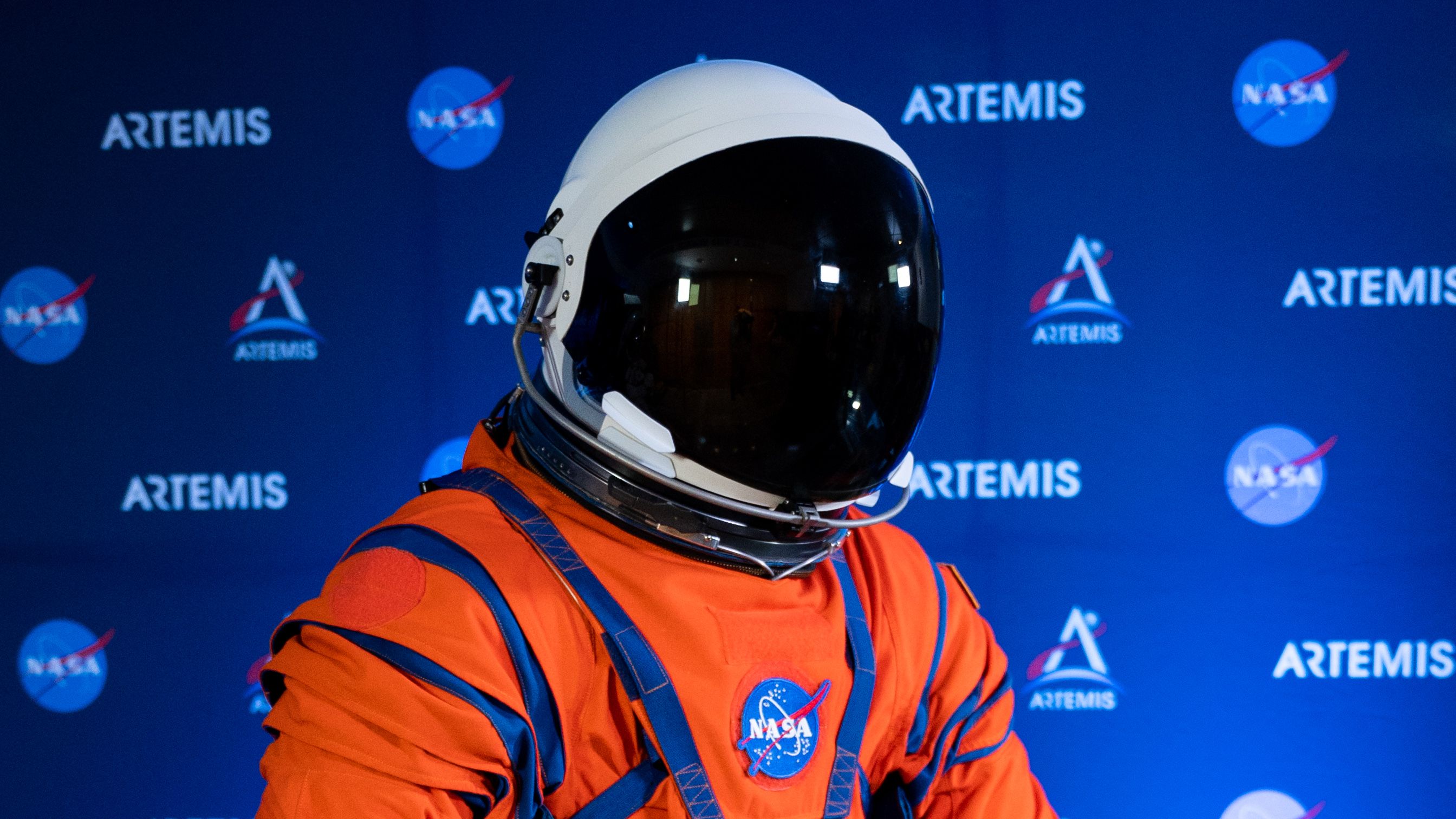Actually, NASA's New Spacesuit Wasn't Designed Specifically for Women
NASA's spacesuit engineers take 'Marie Claire' inside the design process of the first spacesuit a woman will wear on the moon and Mars. Just don’t call it a female spacesuit.


Last March, astronauts Anne McClain and Christina Koch were scheduled to conduct the first all-female spacewalk when suddenly...it was cancelled. The reason why didn’t make the announcement more palatable: The cancellation was due to a lack of spacesuits in the correct sizes readily available for both women. Tweets expressing frustration and disappointment proliferated, with people quick to call out NASA for the sizing issue.
The mission continued as planned with Koch and astronaut Nick Hague instead. McClain had assumed she could use a large spacesuit on the spacewalk; in reality, she needed a medium-sized torso component, and made the decision to remove herself from the mission. About six months later, the first all-female spacewalk did occur with Koch and Jessica Meir, both part of the 2013 graduating astronaut class, about a month after Meir arrived at the International Space Station (ISS).
Around the same time as that spacewalk, NASA unveiled a brand-new spacesuit design. The internet dubbed it the first “female spacesuit,” a continuation of the backlash seven months prior. Little did the public know, the agency had actually been working on the research and development of the new spacesuit, known as the Exploration Extravehicular Mobility Unit (xEMU), for a few years as part of its Artemis program, which will bring the first woman to the moon and, eventually, Mars.
This decision was based on my recommendation. Leaders must make tough calls, and I am fortunate to work with a team who trusts my judgement. We must never accept a risk that can instead be mitigated. Safety of the crew and execution of the mission come first. https://t.co/VU9QNaHHlKMarch 27, 2019
When Marie Claire asked NASA how the next-generation spacesuit, still under development, was adjusted to accommodate women, the agency emphasized that its spacesuit engineers design with anthropometry, i.e. the measurements and proportions of the human body, in mind. In other words, yes, the new spacesuit will have more sizes available for an increasing number of female astronauts with a range of body types...but don’t call it a female spacesuit.
“Gender isn’t really important in how we do spacesuit design,” says Amy Ross, a NASA spacesuit engineer who leads the xEMU pressure garments team, overseeing 23 engineers. “We design for the dimensions of humans, so we build spacesuits for humans.”
Not only will the xEMU have a more inclusive size range, it will also have greater mobility. NASA’s current spacesuit, known as the International Space Station extravehicular mobility unit, is designed for low orbit missions with upper torso mobility, but limited lower torso mobility. The new xEMU suits will allow for increased mobility throughout the entire suit, so astronauts will be able to walk around, kneel, and squat while exploring the surface of the moon and Mars. Instead of entering the spacesuit through the waist, future astronauts will enter the xEMU from the rear.
“Astronauts will also have a lot better visibility because we can have a dome helmet instead of the normal fishbowl-style helmet,” says Kristine Davis, a NASA spacesuit engineer and component manager of the extravehicular visor assembly (EVA). “This gives [astronauts] a lot of downward visibility, because it's important that you're able to see your feet when you're walking around on a planetary surface.”
Get exclusive access to fashion and beauty trends, hot-off-the-press celebrity news, and more.
The xEMU will feel like carrying a backpack, thanks to its shoulder straps and waist belt that evenly distributes the weight between the astronaut’s shoulders and the hips. Once the suit is pressurized to provide a livable environment for the crew members, the weight is distributed throughout the suit and astronauts can safely function when they go into the vacuum of space.

A project manager wears the Orion Crew Survival System (OCSS) suit during a demonstration at NASA Headquarters in Washington, D.C.

Kristine Davis, a spacesuit engineer at NASA’s Johnson Space Center, wears a prototype of the new Exploration Extravehicular Mobility Unit (xEMU) during a demonstration at NASA Headquarters in Washington, D.C.
Along with the xEMU, NASA also unveiled a new orange suit called the Orion Crew Survival System, which is meant to be worn when astronauts launch into space and return to Earth at high speeds, in addition to during high-risk parts of missions near the Moon. In the past, astronauts wore the same suit for their spacewalk as their vehicle activities.
“The point of going back to the moon is to practice for a longer mission on Mars where you need to be much more independent. You need to make sure that the suit has good factors of reliability and durability and safety,” explains Ross. “We’re gonna get as much information as we can about how the suit works so that when we build the final Mars suit it will be able to do a good job.”
Astronauts begin spacesuit fittings years prior to mission assignments. Crew members learn how the spacesuits move and work in the Neutral Buoyancy Lab (NBL), where the astronauts wear real spacesuits and practice spacewalks underwater in one of the largest indoor pools in the world. A life-size model of the space station is submerged in the water to replicate what it feels like to go on a spacewalk in microgravity.
“I think we all found that [part of our training] really challenging, but it's also really exciting and rewarding because it helps you imagine what it's going to be like to do [a spacewalk] in real life,” says Kayla Barron, 32, who's a member of the newest astronaut class and now eligible for a mission assignment. If chosen for a mission, she’ll be wearing the new spacesuits. “Every time we [go to] the Neutral Buoyancy Lab, it kind of hits you that you are actually going to be an astronaut doing spacewalks someday.”
With President Trump’s bold declaration to get a man and a woman to walk on the moon together by 2024, the spacesuit engineers are required to deliver the final designs by the spring of 2023. The plan is for the astronauts to test out the suit on the International Space Station first, then the moon. Still, it is, after all, an election year—and that timeline could change.
“Where we’re going and what we’re doing in the suit drives the design. We’re part of the executive branch, so if our boss changes, a lot of the time our job changes,” says Ross. "Still, most of the nation, including Congress, agrees about what NASA's overall mission is. Though our individual mission strategies and the deadlines may change, the overarching goal of putting humans in space doesn’t change. A lot of the basic work that we do is applicable no matter what happens.”


Rachel Epstein is a writer, editor, and content strategist based in New York City. Most recently, she was the Managing Editor at Coveteur, where she oversaw the site’s day-to-day editorial operations. Previously, she was an editor at Marie Claire, where she wrote and edited culture, politics, and lifestyle stories ranging from op-eds to profiles to ambitious packages. She also launched and managed the site’s virtual book club, #ReadWithMC. Offline, she’s likely watching a Heat game or finding a new coffee shop.
